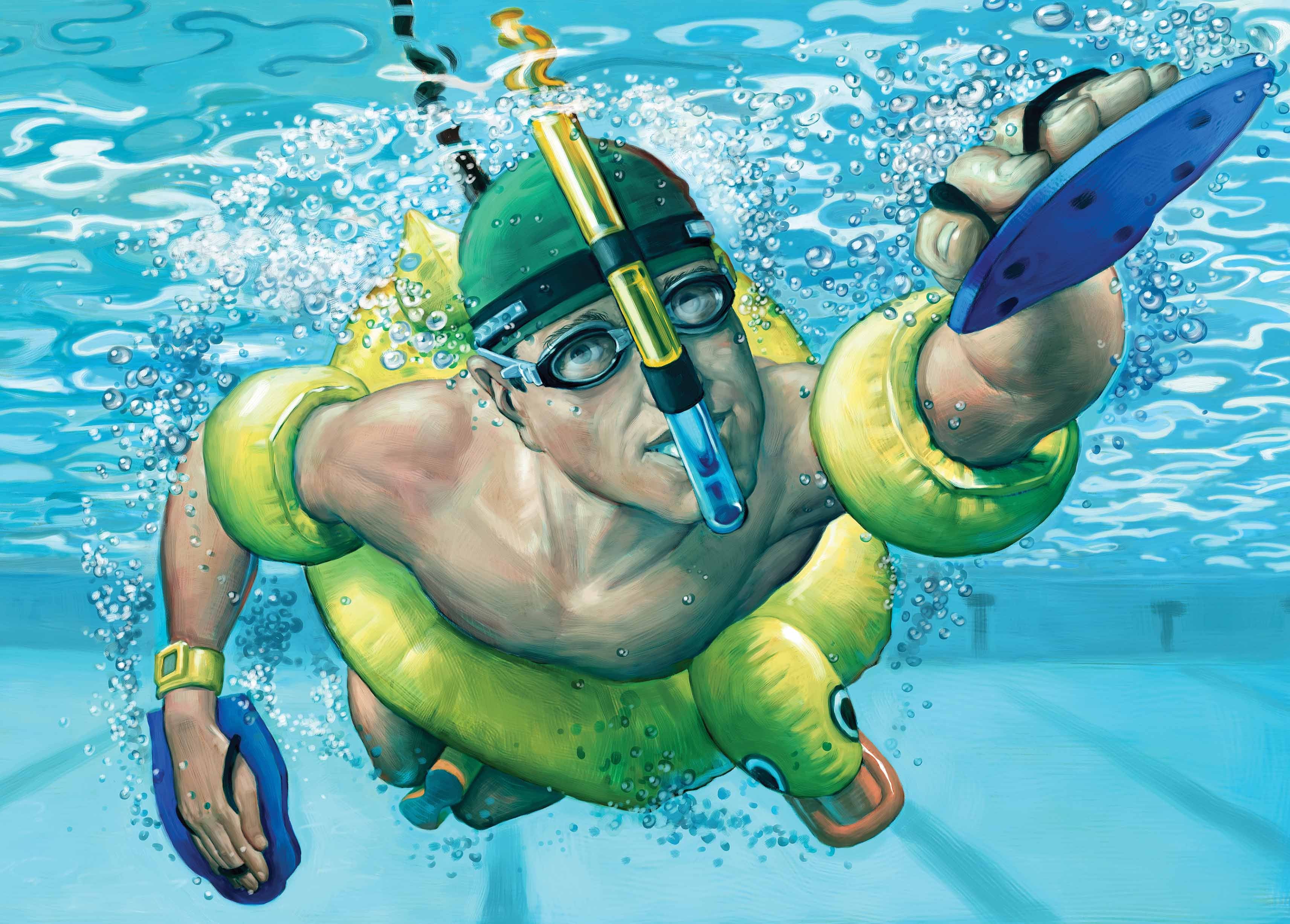Are You Hurting Your Swim Technique?

Illustration by Matt Collins.
Your training intentions may be good, but are they inadvertently hampering your progress?
There’s a wealth of free training information and advice out there, but you’d be hard pressed to find guidance on what drills or focuses are applicable to your specific needs in the water. It’s possible you are currently using swim aid tools in the water that are actually hindering your progress. In such a highly technical sport, it’s critical to keep your performance ceiling high by eliminating drills and swim tools that may only be masking fundamental issues in your stroke mechanics.
For example, I consistently see age-groupers swim faster with a buoy than without. Using a buoy can hide the necessity to engage your core and to maintain a steady tempo and range of motion of your kick to keep your legs high to the water line. Perhaps more importantly is the likeliness of a buoy increasing low back stress by forcing you into a position of static extension. While the kick provides only approximately 10 percent of swimming propulsion, this does not mean your kick should negatively affect your stroke when the buoy is absent. Low, sinking hips and legs are a massive source of drag, so investing time to learn an effective and consistent kick is imperative. Instead, use a buoy occasionally to isolate a focus, perhaps an element at the front of the stroke, such as when you want to slow the stroke rate down in order to emphasize each element of the pull phase.
The trend of using front-mounted snorkels is another potential technique killer. The breath is king. Mastering efficient breathing should be your highest priority and technique focus. The snorkel may be providing the wrong idea to most age-group athletes about what the breath should feel like and how to properly ventilate the lungs. While I do agree that a snorkel could be useful during some drill sets to watch the mechanics of your hand entry and catch, using one too frequently doesn’t demand the incorporation of proper head position and integration of the breath into the stroke cycle.
As with a buoy, using a snorkel can cater to your weaknesses in a way that conceals the root issues at hand, such as inefficient breathing pattern. Getting and expelling air with a snorkel is exhausting, unnatural and non-applicable to endurance and open-water swimming.
I recommend you train the way you will race. Drills requiring swim tools can be wonderful to isolate singular focuses of your stroke, but the more directly you’re able to integrate particular focuses during full freestyle, the better. Swimming is anything but intuitive; thus, removing some of the potential limiters can hone your focus on the elements that provide the greatest returns.
RELATED: How Often Should Swim Tools Be Used?
When it’s OK to use …
Pull buoy
YES: To isolate or focus on a particular element of your pull.
NO: To keep your hips and legs lifted in the water. Or as a crutch to swim without having to kick, perhaps for a harder set.
Snorkel
YES: Specific drill sets
NO: To ignore the breath to focus on an element of the stroke or to increase lung capacity or hypoxic breathing practice.